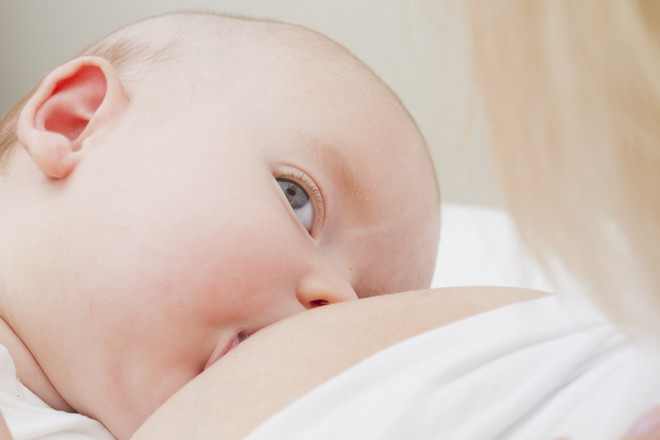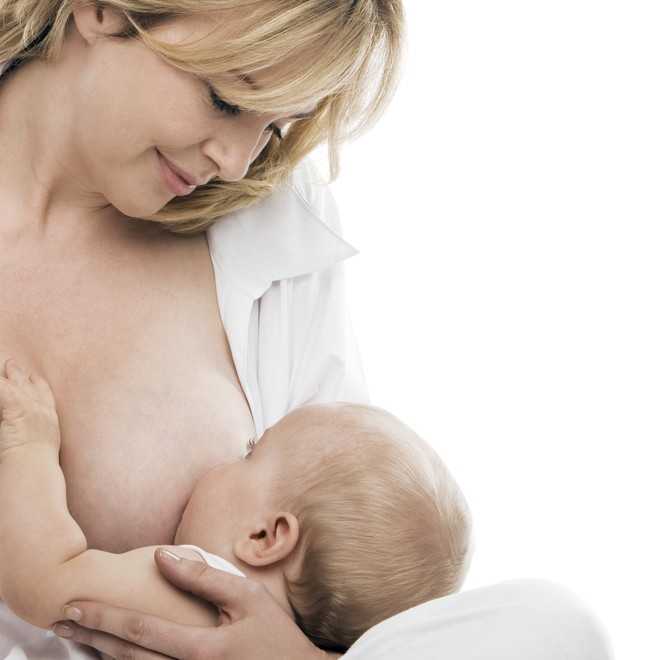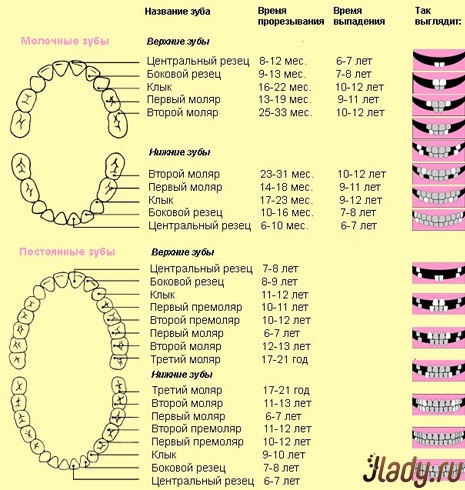 Despite the fact that breastfeedinghas existed for as long as humanity itself, the question of how to properly breastfeed a child is more relevant than ever. Unfortunately, the centuries-old experience of breastfeeding that our ancestors accumulated was lost during the active period of emancipation, since almost all women refused to breastfeed their babies. They did not even think about how long it was necessary to breastfeed a child. Mothers immediately after birth transferred their children to artificial feeding and safely forgot about it, without bothering to think about how much a child should suckle at the breast, and how much he sucks on a bottle, and how to satisfy the sucking reflex. However, in the last ten years, breastfeeding has again gained its rightful popularity. In many ways, this is due to the merit of researchers who were able to collect evidence and convey to women the simple truth about the indispensability of breast milk, as well as the benefits it brings to the baby. However, a very large number of women do not have the slightest idea of how to properly feed their baby. But, as they say, where there is a will, there is a way. After all, the birth of a child and breastfeeding is a rather complicated matter that requires preparation. Now there is a huge amount of literature on how to feed a child, there are even video lessons. In addition, doctors will be happy to help you - both in the maternity hospital and in the children's clinic. In addition, a woman can always use the services of breastfeeding consultants. They will show you how to properly give the baby a breast, explain how to express milk correctly so as not to have mastitis, and help you choose the right diet. Almost loving mother, after the baby turns one year old, begins to think about how long to breastfeed the child. The most common opinion is that the maximum period of feeding is one year. But at this age, the baby does not even think about saying goodbye to such a beloved breast. Moreover, approximately 75% of the total volume of food consumed by a one-year-old child comes from breast milk. So what should we do? How long should we breastfeed our child? The prospect of feeding until 3-4 years, as a rule, does not make a mother very happy either. At the moment, there is no consensus on how long to breastfeed a child. Some say one year, some say two, and special supporters of breastfeeding believe that ideal feeding should last about five years. WHO (World Health Organization) and UNICEF*, when asked how long it is necessary to breastfeed a child, say two years. This is explained by the following reasons:
Despite the fact that breastfeedinghas existed for as long as humanity itself, the question of how to properly breastfeed a child is more relevant than ever. Unfortunately, the centuries-old experience of breastfeeding that our ancestors accumulated was lost during the active period of emancipation, since almost all women refused to breastfeed their babies. They did not even think about how long it was necessary to breastfeed a child. Mothers immediately after birth transferred their children to artificial feeding and safely forgot about it, without bothering to think about how much a child should suckle at the breast, and how much he sucks on a bottle, and how to satisfy the sucking reflex. However, in the last ten years, breastfeeding has again gained its rightful popularity. In many ways, this is due to the merit of researchers who were able to collect evidence and convey to women the simple truth about the indispensability of breast milk, as well as the benefits it brings to the baby. However, a very large number of women do not have the slightest idea of how to properly feed their baby. But, as they say, where there is a will, there is a way. After all, the birth of a child and breastfeeding is a rather complicated matter that requires preparation. Now there is a huge amount of literature on how to feed a child, there are even video lessons. In addition, doctors will be happy to help you - both in the maternity hospital and in the children's clinic. In addition, a woman can always use the services of breastfeeding consultants. They will show you how to properly give the baby a breast, explain how to express milk correctly so as not to have mastitis, and help you choose the right diet. Almost loving mother, after the baby turns one year old, begins to think about how long to breastfeed the child. The most common opinion is that the maximum period of feeding is one year. But at this age, the baby does not even think about saying goodbye to such a beloved breast. Moreover, approximately 75% of the total volume of food consumed by a one-year-old child comes from breast milk. So what should we do? How long should we breastfeed our child? The prospect of feeding until 3-4 years, as a rule, does not make a mother very happy either. At the moment, there is no consensus on how long to breastfeed a child. Some say one year, some say two, and special supporters of breastfeeding believe that ideal feeding should last about five years. WHO (World Health Organization) and UNICEF*, when asked how long it is necessary to breastfeed a child, say two years. This is explained by the following reasons:
- The baby of the first six months should not receivenothing but mother's milk. After all, it contains absolutely everything that the child needs at this stage of development, nutrients, including water. That is why doctors do not recommend additionally to give the baby water.
- After six months, the needs of the child are sharp.are increasing, and mother's milk is no longer able to fully satisfy them, which is why from 6 months they begin to introduce feedings. However, breast milk is still extremely necessary for the baby. In addition to nutrients, micro and macro, mother's milk stimulates the production of digestive enzymes that are necessary for the child in order to fully absorb the supplements.
- Once a baby reaches one year old, itsthe menu expands significantly, as the baby grows, the volume of food eaten increases, and the volume of mother's milk consumed by the child, respectively, decreases. However, it is at this stage of child development that the mother’s breast for the baby ceases to be only a source of food, and also becomes an essential element of bodily and emotional contact with the mother. Therefore, weaning at the age of one year usually happens very hard for both the mother and the child.
- Also, deciding for yourself how much to feedWhen breastfeeding a child, a woman should remember that breast milk constantly changes its composition, adapting to the needs of the child at a particular age. In the second year of life, the baby receives a huge amount of antibodies and immunoglobulins with mother's milk, which strengthen the child's immunity and prepare it for independent functioning.
It is worth telling about the composition of breast milka little more detail, as this can help many mothers finally decide how long to breastfeed their child. In the second year of breastfeeding, milk still contains a lot of valuable fats and proteins, essential enzymes and amino acids. The vitamins and hormones necessary for the baby, micro and macroelements found in mother's milk are perfectly and quickly absorbed by the baby, being a kind of "vitamin cocktail". The mother's diet has practically no effect on the composition of her milk, which in a way that is still incomprehensible to science changes its composition almost every hour, and strictly in accordance with the current needs of the child. In the second year of life, all children experience an increased need for vitamin A, necessary for normal eye development, and vitamin K, which has a beneficial effect on the hematopoietic system. And it is these vitamins that are found in increased quantities in breast milk. Separately, it is worth mentioning the content of iron in mother's milk. It is this iron that is absorbed best of all. Breastfed babies never get iron deficiency anemia, which is something to keep in mind when deciding how much your baby should breastfeed.
How much should you breast feed your baby so that he has good immunity?
 Very often mothers ask the question about how muchyou need to breastfeed your baby, taking care of his immunity. And this is absolutely right, because how strong the child's immunity will be largely depends on how long the mother will breastfeed the baby. Numerous laboratory studies have proven that any pathogenic organism, be it bacteria or viruses, that enters the mother's body causes the appearance in milk of those immunoglobulins that can protect the baby from this particular disease. The older the baby becomes, the higher the concentration of these immunoglobulins. This can explain the fact that children who are breastfed almost never get viral diseases. In addition, they are never affected by diseases such as measles, rubella, chickenpox, if the mother has had these diseases. In addition, among children whose mothers do not ask themselves the question - how long should I breastfeed my child, but feed after a year, there are almost never allergy sufferers. This fact is explained by the fact that immunoglobulins contained in breast milk coat the intestinal mucosa, preventing both pathogenic microorganisms and allergens from penetrating inside. That is why intestinal disorders and dysbacteriosis are very rare among children who are breastfed. Scientists have proven the presence of a direct relationship between breastfeeding and the risk of diabetes. Unfortunately, recently more and more children are faced with this serious disease, which cannot but cause concern. Energy elements, such as carbohydrates and proteins contained in breast milk, are perfectly absorbed by the child's body, which easily breaks them down and without the need to increase the level of metabolism. But it is precisely due to the increase in the level of metabolism that the normal functioning of the pancreas is disrupted, which in the future leads to the development of diabetes. Speech therapists also claim that children who have been breastfed for a long time are much less likely to suffer from various speech disorders. This is explained by the fact that during prolonged breastfeeding, all the muscles of the palate work during the sucking process. And such children reproduce various frequencies and tones of sound much better than other peers.
Very often mothers ask the question about how muchyou need to breastfeed your baby, taking care of his immunity. And this is absolutely right, because how strong the child's immunity will be largely depends on how long the mother will breastfeed the baby. Numerous laboratory studies have proven that any pathogenic organism, be it bacteria or viruses, that enters the mother's body causes the appearance in milk of those immunoglobulins that can protect the baby from this particular disease. The older the baby becomes, the higher the concentration of these immunoglobulins. This can explain the fact that children who are breastfed almost never get viral diseases. In addition, they are never affected by diseases such as measles, rubella, chickenpox, if the mother has had these diseases. In addition, among children whose mothers do not ask themselves the question - how long should I breastfeed my child, but feed after a year, there are almost never allergy sufferers. This fact is explained by the fact that immunoglobulins contained in breast milk coat the intestinal mucosa, preventing both pathogenic microorganisms and allergens from penetrating inside. That is why intestinal disorders and dysbacteriosis are very rare among children who are breastfed. Scientists have proven the presence of a direct relationship between breastfeeding and the risk of diabetes. Unfortunately, recently more and more children are faced with this serious disease, which cannot but cause concern. Energy elements, such as carbohydrates and proteins contained in breast milk, are perfectly absorbed by the child's body, which easily breaks them down and without the need to increase the level of metabolism. But it is precisely due to the increase in the level of metabolism that the normal functioning of the pancreas is disrupted, which in the future leads to the development of diabetes. Speech therapists also claim that children who have been breastfed for a long time are much less likely to suffer from various speech disorders. This is explained by the fact that during prolonged breastfeeding, all the muscles of the palate work during the sucking process. And such children reproduce various frequencies and tones of sound much better than other peers.
How often should I breastfeed?
 The second most popular question asked isnursing mothers - how often to breastfeed a child? This is largely determined by the age of the baby. The younger the baby, the more often he asks to eat. Some mothers complain that sometimes the child begins to ask for the breast literally a few minutes after feeding. Sometimes, to solve the problem, the mother only needs to figure out how to properly give the breast to her child. After all, if the attachment to the breast is incorrect, you can look for an answer to the question of how often to breastfeed a child for a long time and without result. With incorrect attachment, the baby is deprived of the opportunity to effectively suck milk from the breast. Something like this happens: the baby asks for the breast, gets it, attaches incorrectly and tries for a long time to get the required amount of milk. The mother, thinking that the child is full, takes the breast away, puts the baby down. But the child is still hungry. And it is completely natural that after 10 minutes he begins to cry and ask for the breast. Be sure to check if your baby has enough milk. This can be done as follows:
The second most popular question asked isnursing mothers - how often to breastfeed a child? This is largely determined by the age of the baby. The younger the baby, the more often he asks to eat. Some mothers complain that sometimes the child begins to ask for the breast literally a few minutes after feeding. Sometimes, to solve the problem, the mother only needs to figure out how to properly give the breast to her child. After all, if the attachment to the breast is incorrect, you can look for an answer to the question of how often to breastfeed a child for a long time and without result. With incorrect attachment, the baby is deprived of the opportunity to effectively suck milk from the breast. Something like this happens: the baby asks for the breast, gets it, attaches incorrectly and tries for a long time to get the required amount of milk. The mother, thinking that the child is full, takes the breast away, puts the baby down. But the child is still hungry. And it is completely natural that after 10 minutes he begins to cry and ask for the breast. Be sure to check if your baby has enough milk. This can be done as follows:
- For one day do without disposablediapers. Count how many wet diapers you have in a day. If the baby had at least 10-12 urinations, you can not worry, there is enough milk for him. If it is less, then you need to sound the alarm: make sure that you put the baby on the chest correctly, increase the level of lactation. Incidentally, the best way to increase lactation is precisely frequent breastfeeding.
- Control weighing crumbs. The average weight gain in children in the first three months of life should be about 400 grams.
However, even if there is no milkenough, you should not immediately transfer the baby to artificial feeding. This may simply be a lactation crisis (a temporary physiological decrease in lactation). In addition, it is absolutely not difficult to increase lactation. It is enough to apply the baby to the breast a little more often, especially in the morning. The birth of a child and his breastfeeding - this is the main purpose of any mother. And of course, any mother wants her baby to be fine, so that he grows up the happiest and healthiest baby. And it is in the power of every mother to help him with this. Do not be afraid of your inexperience, in response to the question of how to properly feed a child - video lessons can give a detailed and visual example. A consultant is a person who knows all the features of breastfeeding well: how to properly apply, how much the child should suckle, at what age lactation crises occur and other subtleties - can give you advice at any time when you need it. As a rule, the phone numbers of breastfeeding consultants are available in all children's clinics. Also, follow the publications on our website - our specialists will answer in detail every question concerning the birth of a child - breastfeeding. Everything that is important to you is very important to us! We recommend reading:
Comments
comments
 How to breastfeed babyPhoto: Getty The sooner you put your baby to your chest, the better. This will ensure the formation of a normal lactation process. In the first days after childbirth, not milk but colostrum is excreted from the breast. It has a special composition: a minimum of carbohydrates, a large amount of easily digestible protein and trace elements. This allows you to create immunity and microflora in the digestive tract of the baby. To further develop breast milk in the right quantity, you need to follow some rules from the first days of feeding.
How to breastfeed babyPhoto: Getty The sooner you put your baby to your chest, the better. This will ensure the formation of a normal lactation process. In the first days after childbirth, not milk but colostrum is excreted from the breast. It has a special composition: a minimum of carbohydrates, a large amount of easily digestible protein and trace elements. This allows you to create immunity and microflora in the digestive tract of the baby. To further develop breast milk in the right quantity, you need to follow some rules from the first days of feeding. How many months to breastfeed? Photo: Getty
How many months to breastfeed? Photo: Getty









 Despite the fact that breastfeedinghas existed for as long as humanity itself, the question of how to properly breastfeed a child is more relevant than ever. Unfortunately, the centuries-old experience of breastfeeding that our ancestors accumulated was lost during the active period of emancipation, since almost all women refused to breastfeed their babies. They did not even think about how long it was necessary to breastfeed a child. Mothers immediately after birth transferred their children to artificial feeding and safely forgot about it, without bothering to think about how much a child should suckle at the breast, and how much he sucks on a bottle, and how to satisfy the sucking reflex. However, in the last ten years, breastfeeding has again gained its rightful popularity. In many ways, this is due to the merit of researchers who were able to collect evidence and convey to women the simple truth about the indispensability of breast milk, as well as the benefits it brings to the baby. However, a very large number of women do not have the slightest idea of how to properly feed their baby. But, as they say, where there is a will, there is a way. After all, the birth of a child and breastfeeding is a rather complicated matter that requires preparation. Now there is a huge amount of literature on how to feed a child, there are even video lessons. In addition, doctors will be happy to help you - both in the maternity hospital and in the children's clinic. In addition, a woman can always use the services of breastfeeding consultants. They will show you how to properly give the baby a breast, explain how to express milk correctly so as not to have mastitis, and help you choose the right diet. Almost loving mother, after the baby turns one year old, begins to think about how long to breastfeed the child. The most common opinion is that the maximum period of feeding is one year. But at this age, the baby does not even think about saying goodbye to such a beloved breast. Moreover, approximately 75% of the total volume of food consumed by a one-year-old child comes from breast milk. So what should we do? How long should we breastfeed our child? The prospect of feeding until 3-4 years, as a rule, does not make a mother very happy either. At the moment, there is no consensus on how long to breastfeed a child. Some say one year, some say two, and special supporters of breastfeeding believe that ideal feeding should last about five years. WHO (World Health Organization) and UNICEF*, when asked how long it is necessary to breastfeed a child, say two years. This is explained by the following reasons:
Despite the fact that breastfeedinghas existed for as long as humanity itself, the question of how to properly breastfeed a child is more relevant than ever. Unfortunately, the centuries-old experience of breastfeeding that our ancestors accumulated was lost during the active period of emancipation, since almost all women refused to breastfeed their babies. They did not even think about how long it was necessary to breastfeed a child. Mothers immediately after birth transferred their children to artificial feeding and safely forgot about it, without bothering to think about how much a child should suckle at the breast, and how much he sucks on a bottle, and how to satisfy the sucking reflex. However, in the last ten years, breastfeeding has again gained its rightful popularity. In many ways, this is due to the merit of researchers who were able to collect evidence and convey to women the simple truth about the indispensability of breast milk, as well as the benefits it brings to the baby. However, a very large number of women do not have the slightest idea of how to properly feed their baby. But, as they say, where there is a will, there is a way. After all, the birth of a child and breastfeeding is a rather complicated matter that requires preparation. Now there is a huge amount of literature on how to feed a child, there are even video lessons. In addition, doctors will be happy to help you - both in the maternity hospital and in the children's clinic. In addition, a woman can always use the services of breastfeeding consultants. They will show you how to properly give the baby a breast, explain how to express milk correctly so as not to have mastitis, and help you choose the right diet. Almost loving mother, after the baby turns one year old, begins to think about how long to breastfeed the child. The most common opinion is that the maximum period of feeding is one year. But at this age, the baby does not even think about saying goodbye to such a beloved breast. Moreover, approximately 75% of the total volume of food consumed by a one-year-old child comes from breast milk. So what should we do? How long should we breastfeed our child? The prospect of feeding until 3-4 years, as a rule, does not make a mother very happy either. At the moment, there is no consensus on how long to breastfeed a child. Some say one year, some say two, and special supporters of breastfeeding believe that ideal feeding should last about five years. WHO (World Health Organization) and UNICEF*, when asked how long it is necessary to breastfeed a child, say two years. This is explained by the following reasons: Very often mothers ask the question about how muchyou need to breastfeed your baby, taking care of his immunity. And this is absolutely right, because how strong the child's immunity will be largely depends on how long the mother will breastfeed the baby. Numerous laboratory studies have proven that any pathogenic organism, be it bacteria or viruses, that enters the mother's body causes the appearance in milk of those immunoglobulins that can protect the baby from this particular disease. The older the baby becomes, the higher the concentration of these immunoglobulins. This can explain the fact that children who are breastfed almost never get viral diseases. In addition, they are never affected by diseases such as measles, rubella, chickenpox, if the mother has had these diseases. In addition, among children whose mothers do not ask themselves the question - how long should I breastfeed my child, but feed after a year, there are almost never allergy sufferers. This fact is explained by the fact that immunoglobulins contained in breast milk coat the intestinal mucosa, preventing both pathogenic microorganisms and allergens from penetrating inside. That is why intestinal disorders and dysbacteriosis are very rare among children who are breastfed. Scientists have proven the presence of a direct relationship between breastfeeding and the risk of diabetes. Unfortunately, recently more and more children are faced with this serious disease, which cannot but cause concern. Energy elements, such as carbohydrates and proteins contained in breast milk, are perfectly absorbed by the child's body, which easily breaks them down and without the need to increase the level of metabolism. But it is precisely due to the increase in the level of metabolism that the normal functioning of the pancreas is disrupted, which in the future leads to the development of diabetes. Speech therapists also claim that children who have been breastfed for a long time are much less likely to suffer from various speech disorders. This is explained by the fact that during prolonged breastfeeding, all the muscles of the palate work during the sucking process. And such children reproduce various frequencies and tones of sound much better than other peers.
Very often mothers ask the question about how muchyou need to breastfeed your baby, taking care of his immunity. And this is absolutely right, because how strong the child's immunity will be largely depends on how long the mother will breastfeed the baby. Numerous laboratory studies have proven that any pathogenic organism, be it bacteria or viruses, that enters the mother's body causes the appearance in milk of those immunoglobulins that can protect the baby from this particular disease. The older the baby becomes, the higher the concentration of these immunoglobulins. This can explain the fact that children who are breastfed almost never get viral diseases. In addition, they are never affected by diseases such as measles, rubella, chickenpox, if the mother has had these diseases. In addition, among children whose mothers do not ask themselves the question - how long should I breastfeed my child, but feed after a year, there are almost never allergy sufferers. This fact is explained by the fact that immunoglobulins contained in breast milk coat the intestinal mucosa, preventing both pathogenic microorganisms and allergens from penetrating inside. That is why intestinal disorders and dysbacteriosis are very rare among children who are breastfed. Scientists have proven the presence of a direct relationship between breastfeeding and the risk of diabetes. Unfortunately, recently more and more children are faced with this serious disease, which cannot but cause concern. Energy elements, such as carbohydrates and proteins contained in breast milk, are perfectly absorbed by the child's body, which easily breaks them down and without the need to increase the level of metabolism. But it is precisely due to the increase in the level of metabolism that the normal functioning of the pancreas is disrupted, which in the future leads to the development of diabetes. Speech therapists also claim that children who have been breastfed for a long time are much less likely to suffer from various speech disorders. This is explained by the fact that during prolonged breastfeeding, all the muscles of the palate work during the sucking process. And such children reproduce various frequencies and tones of sound much better than other peers. The second most popular question asked isnursing mothers - how often to breastfeed a child? This is largely determined by the age of the baby. The younger the baby, the more often he asks to eat. Some mothers complain that sometimes the child begins to ask for the breast literally a few minutes after feeding. Sometimes, to solve the problem, the mother only needs to figure out how to properly give the breast to her child. After all, if the attachment to the breast is incorrect, you can look for an answer to the question of how often to breastfeed a child for a long time and without result. With incorrect attachment, the baby is deprived of the opportunity to effectively suck milk from the breast. Something like this happens: the baby asks for the breast, gets it, attaches incorrectly and tries for a long time to get the required amount of milk. The mother, thinking that the child is full, takes the breast away, puts the baby down. But the child is still hungry. And it is completely natural that after 10 minutes he begins to cry and ask for the breast. Be sure to check if your baby has enough milk. This can be done as follows:
The second most popular question asked isnursing mothers - how often to breastfeed a child? This is largely determined by the age of the baby. The younger the baby, the more often he asks to eat. Some mothers complain that sometimes the child begins to ask for the breast literally a few minutes after feeding. Sometimes, to solve the problem, the mother only needs to figure out how to properly give the breast to her child. After all, if the attachment to the breast is incorrect, you can look for an answer to the question of how often to breastfeed a child for a long time and without result. With incorrect attachment, the baby is deprived of the opportunity to effectively suck milk from the breast. Something like this happens: the baby asks for the breast, gets it, attaches incorrectly and tries for a long time to get the required amount of milk. The mother, thinking that the child is full, takes the breast away, puts the baby down. But the child is still hungry. And it is completely natural that after 10 minutes he begins to cry and ask for the breast. Be sure to check if your baby has enough milk. This can be done as follows:




